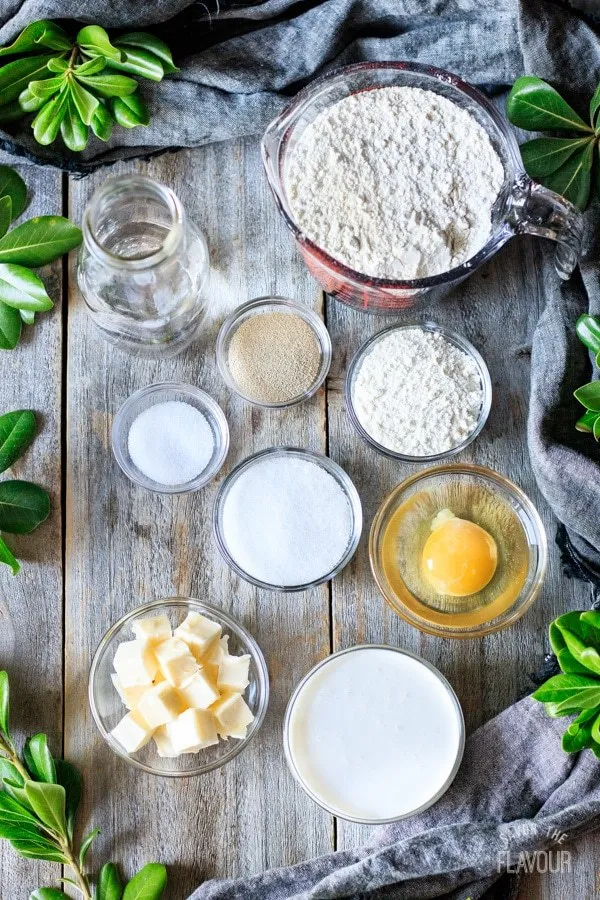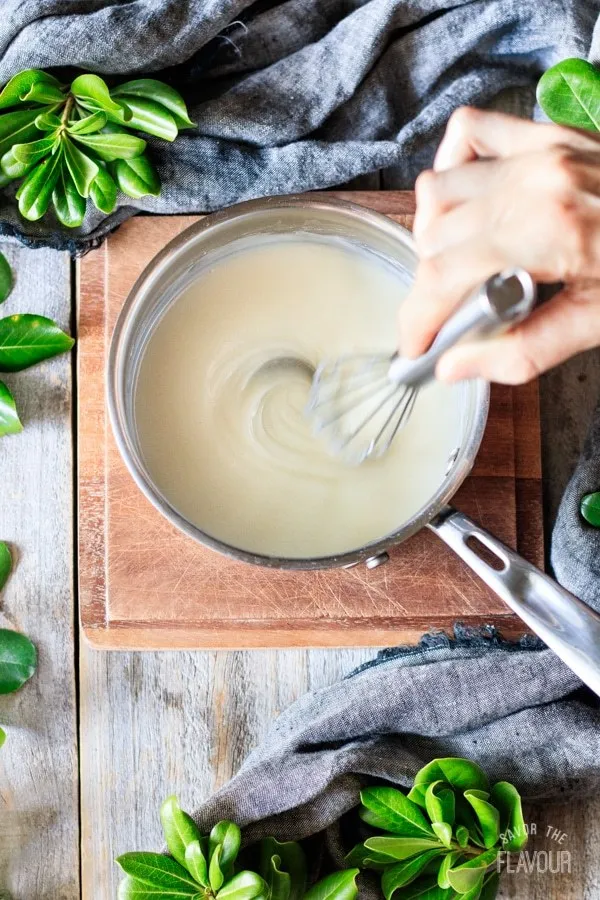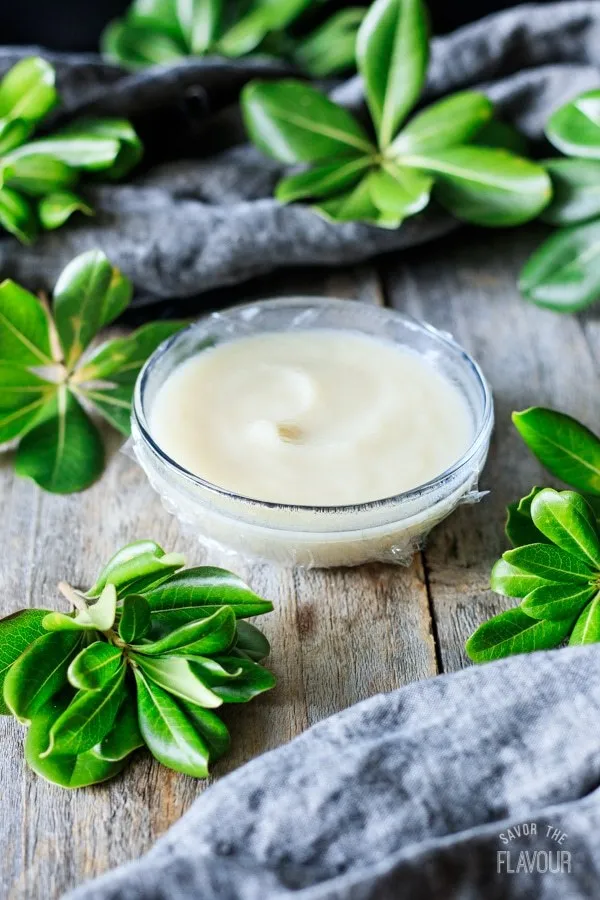Have you ever dreamed of making golden, fragrant croissants just like those from famous French bakeries? The croissant, or crescent roll, is more than just a pastry; it’s a symbol of sophistication and culinary delight. With this article, you will discover the secrets to making authentic French croissants, step-by-step, to bring the taste of Paris right to your kitchen.
Discovering Croissants: More Than Just a Pastry
Croissants are a type of pastry originating from Austria but widely known as an indispensable part of French culinary culture. The name “croissant” means “crescent” in French, describing the pastry’s distinctive shape. What makes croissants so special? It’s the crispy outer layers, the soft, airy inside, and the irresistible rich buttery flavor.

Essential Ingredients for “Authentic French” Croissants
To make delicious croissants, choosing quality ingredients is key. Here is a list of the necessary ingredients:
- Bread flour: Choose a specialized bread flour with a high gluten content (around 11-13%) to ensure the pastry has a good structure.
- Butter: Use high-quality unsalted butter with a fat content of 82% or higher. Butter is the most important factor in creating the flavor and characteristic structure of croissants.
- Unsweetened fresh milk: Fresh milk makes the croissants softer and more flavorful.
- Yeast: Use instant yeast or fresh yeast. If using fresh yeast, it needs to be activated before use.
- Sugar: A small amount of sugar helps the yeast activate better and adds a subtle sweetness to the pastry.
- Salt: Salt not only enhances the flavor but also helps control the fermentation process.
- Water: Cold water is crucial for keeping the dough temperature stable during kneading.
- Egg (optional): Use an egg to brush the surface of the croissants before baking, giving them a beautiful golden color.
Authentic French Croissant Recipe (For Beginners)
The following recipe is adjusted for beginners who are new to making croissants, ensuring success from the very first try.
Part 1: Making the Dough
- 500g bread flour
- 250ml cold water
- 50ml unsweetened fresh milk
- 50g sugar
- 10g salt
- 10g instant yeast (or 30g fresh yeast)
Part 2: Butter Block
- 300g unsalted butter, chilled (very important)
Instructions:
- Knead the dough: In a large bowl, mix together bread flour, sugar, salt, and instant yeast. If using fresh yeast, dissolve it in warm milk before mixing with the flour.
- Add liquids: Gradually add cold water to the flour mixture, kneading until the dough comes together into a ball.
- Knead thoroughly: Continue kneading the dough on a clean surface for about 10-15 minutes until it is smooth, elastic, and no longer sticky.
- First proof: Place the dough in a bowl, cover tightly with plastic wrap or a damp cloth. Proof the dough at room temperature for about 1-1.5 hours, or until it has doubled in size.
- Chill the dough: After proofing, gently deflate the dough. Wrap it tightly in plastic wrap and refrigerate for at least 2 hours, or preferably overnight.
- Prepare the butter: While the dough is chilling, prepare the butter. Cut the chilled butter into thin slices, arrange them on parchment paper in a square shape about 15x15cm. Use a rolling pin to gently roll the butter until it is pliable and forms an even thin layer. Wrap the butter and refrigerate.
- Roll out dough and butter: Take the dough out of the refrigerator, roll it out into a rectangle about 20x40cm. Place the rolled-out butter block in the center of the dough, fold the two edges of the dough over to completely enclose the butter.
- Lamination (Rolling and folding):
- Gently roll the dough into a rectangle three times as long as its original width. Be careful to roll evenly so that the butter does not break or leak out.
- Fold the dough into thirds (fold the top edge down by 1/3, then fold the bottom edge up). Rotate the dough 90 degrees, wrap it tightly, and refrigerate for 30 minutes.
- Repeat this rolling and folding process 2-3 more times, chilling the dough in the refrigerator for 30 minutes after each rolling and folding. This process creates alternating layers of dough and butter, giving croissants their characteristic structure.
- Shape the croissants: After laminating the dough enough times, roll it out into a thin rectangle (about 3-4mm thick). Use a knife or pizza cutter to cut the dough into long triangles.
- Roll the croissants: Roll each triangle from the base to the tip to form a crescent shape. Place the croissants on a baking sheet lined with parchment paper, leaving space between each pastry.
- Second proof: Cover the baking sheet with plastic wrap or a damp cloth. Proof the croissants at room temperature for about 1-2 hours, or until they have doubled in size.
- Bake: Preheat the oven to 180°C (350°F). If you want a beautiful golden color, brush the surface of the croissants with a beaten egg before baking.
- Bake: Place the baking sheet in the preheated oven and bake for about 15-20 minutes, or until the croissants are golden brown and have a crispy crust.
- Enjoy: Remove the croissants from the oven, let them cool on a wire rack, and enjoy while still warm.

Tips for Perfect Croissants
- Maintain cold temperatures: Temperature is the most crucial factor in making croissants. The dough and butter must always be kept cold to ensure the butter layers do not melt and blend into the dough.
- Roll dough evenly: Rolling the dough evenly helps create uniform layers of dough and butter, allowing the croissants to rise evenly and have a good structure.
- Don’t be discouraged: Making croissants requires patience and meticulousness. Don’t be discouraged if you don’t succeed the first time. Try again and learn from your experience, you will succeed!
Croissant Variations: Limitless Creativity
Once you master the basic recipe, you can unleash your creativity with croissants. Here are a few suggestions:
- Almond croissants: Sprinkle sliced almonds on the surface of the croissants before baking.
- Chocolate croissants: Add chocolate sticks to the center of the dough before rolling up.
- Savory croissants: Replace sweet fillings with savory fillings such as cheese, bacon, vegetables, etc.

Croissants and French Culinary Culture
Croissants are not just a pastry but also an indispensable part of French culinary culture. The French often enjoy croissants for breakfast, accompanied by coffee or hot chocolate. Croissants are also a familiar treat at afternoon tea or picnics.
Conclusion
With the recipe and tips above, you can absolutely make delicious, authentic French croissants at home. Experiment and enjoy the joy of creating in your kitchen. Wishing you success and perfect croissants!